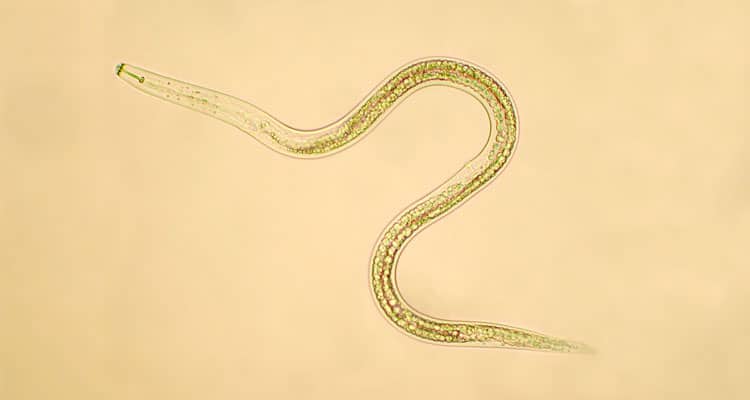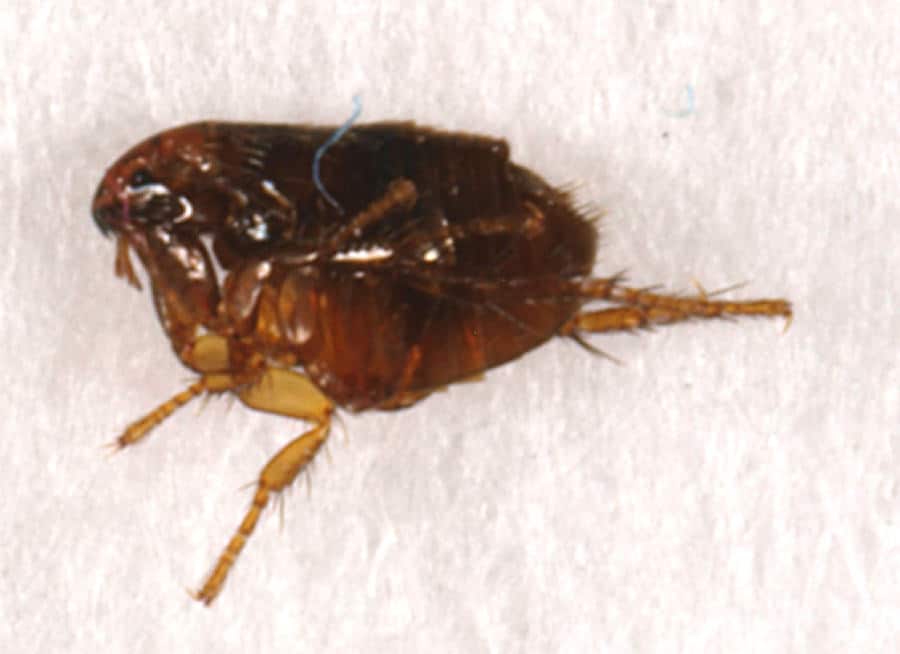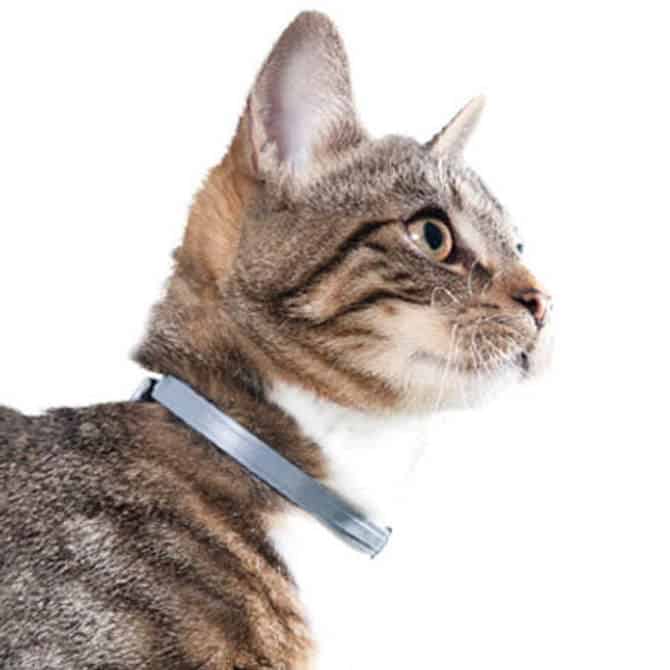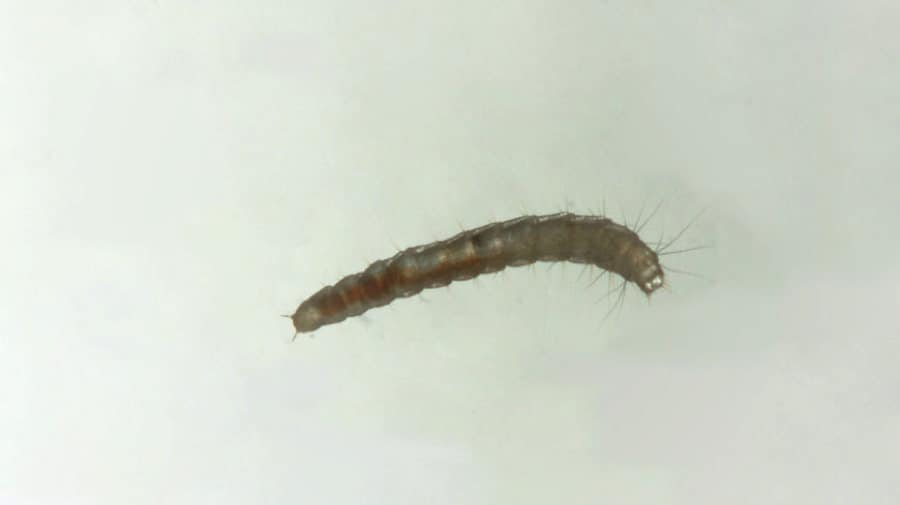What Is Flea Dirt On Dogs & Cats?
There is nothing remotely fun about having an infestation of fleas on your pet and in your home. They are extremely bothersome as they leave irritating bites on both you and your pet. They can also cause your living environment to become unclean due to the resulting flea dirt, which can fall from your pet’s fur.
What Is Flea Dirt?
Flea dirt is quite simply the excrement from fleas that are living on your pet. It is made up of a mixture of blood meal and waste matter from a flea’s digestive system.
It is interesting to note that most of the flea dirt you may find on your pet actually comes from female fleas. This is because female fleas are larger than their male counterparts, and they can ingest up to 15 times their own bodyweight of your pet’s blood in just one day! Now that’s going to result in an awful lot of poo!
What Does Flea Dirt Look Like?
Flea dirt is fairly easy to spot on your pet as it appears as brownish-black dots or specks which can be found in their fur. It usually sits on or near the surface of your pet’s skin and it can be seen if you part and flatten their fur. It is also possible to notice flea dirt on other areas in your home, especially in bedding belonging to your pet, or on places that they like to sit.
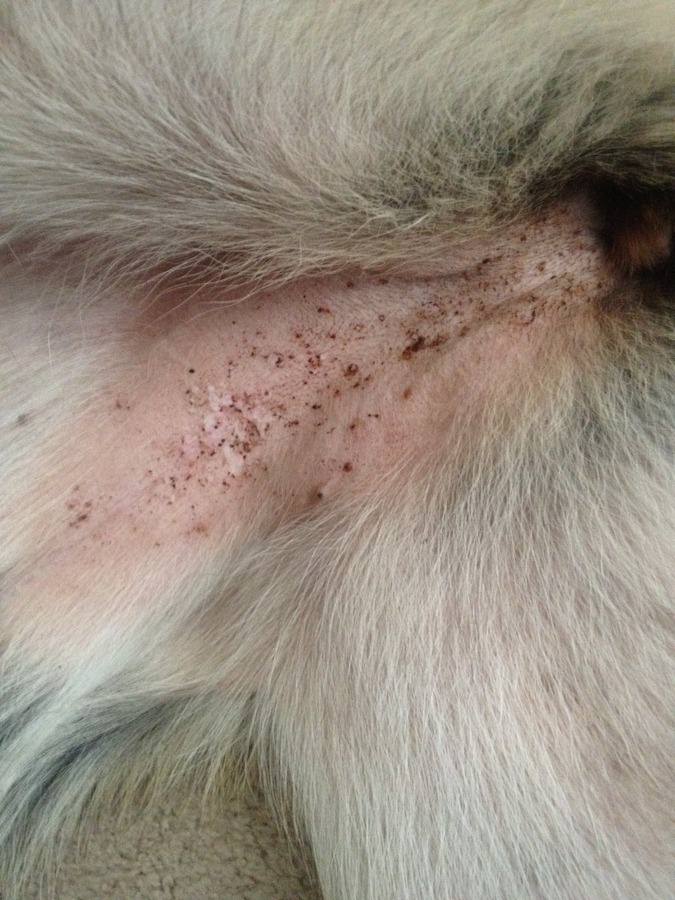
If your pet is particularly active or likes to play in water, then flea dirt may appear as reddish-brown streaks on the skin. This is due to the fact that flea dirt dissolves into liquid when it comes into contact with water or sweat. Dried flea dirt can feel rough and grainy to touch, a little bit like sand.
Is Flea Dirt Flea Eggs?
While flea dirt and flea eggs are both small in size and therefore can be difficult to spot, there is one huge difference between the two and that is the color of them. As I have mentioned, flea dirt is a brown or black color and appears dark against your pet’s skin. Flea eggs are a white or cream color and are harder to see against your pet’s skin.
However, you must remember that you do not need to find both flea dirt and eggs to establish that your pet is suffering from a flea infestation; you may only find one of these signs or neither of them at all, alongside the fleas.
How Can You Tell the Difference Between Flea Dirt and Actual Dirt?
It’s rather easy to be unsure as to whether the tiny black spots that you find on your pet’s fur is regular dirt or flea dirt as a result of an infestation. However, there is a simple test that you can do in order to establish whether you have found flea dirt or actual dirt on your pet.
To check which dirt you have, you will need a cotton ball or a tissue, and a little bit of water. Firstly, you need to moisten the cotton ball or tissue and then use this to apply water to the dirt. This can be done on the body of your pet, or on another surface that the dirt may have collected on. If the cotton ball or tissue turns a reddish brown color on contact with the dirt, then you can safely assume that this is due to the presence of dried blood and the substance you have found is flea dirt.
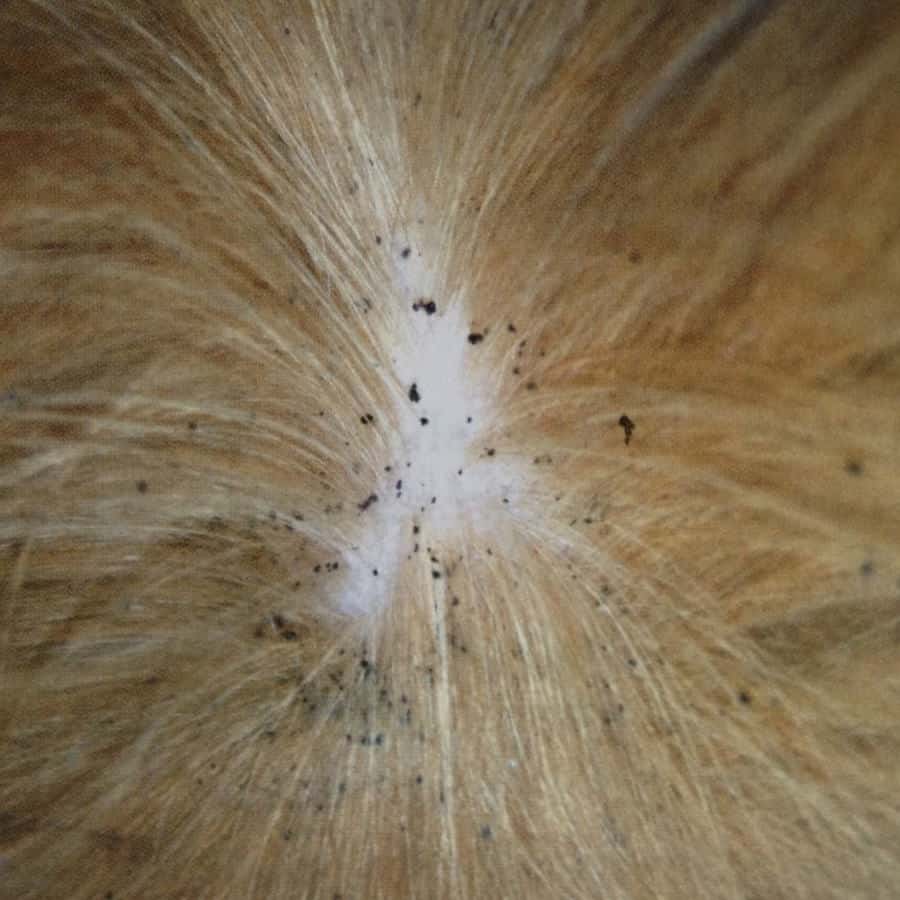
Where Should You Look for Flea Dirt?
Although flea dirt can be found in many areas of your pet’s body, there is often a higher concentration of it on your pet’s stomach and the area under the tail and between the hind legs. It is unusual to find flea dirt on the head or neck area, although not impossible.
You may find it difficult to see evidence of flea dirt on your cat. This is because cats can often lick away all evidence of flea dirt when they are cleaning themselves. Unfortunately, this does not remove the cause of the flea dirt, the fleas themselves.
If you’re unsure as to whether your pet has flea dirt specifically, then it may be best to first look for the other clear signs that they may have fleas.
Why is the Presence of Flea Dirt a Problem?
Finding flea dirt on your pet or in your home not only means that cleaning is required, it is also a key sign of a flea infestation which will require some level of treatment.
It is important to treat your pet using a high-quality flea treatment and prevention cream, and to apply this correctly to their body and fur.
You will also need to treat your pet’s bedding and any items of clothing that may have come into contact with fleas, and be infested with them as a result. Washing these items at a temperature of at least 140 degrees Fahrenheit should kill all fleas, eggs, and larvae that may be living in them.

The last and largest treatment that you will need to undertake is that of your entire house. All removable furnishings can be washed at a high temperature. However, you will need to treat remaining areas with a flea spray or bomb, which will impregnate all surfaces and kill fleas no matter which stage of their life cycle they are at.
Vacuuming regularly will also help you a lot, especially after treating your house with a flea spray or bomb. This removes fleas, eggs, and larvae, and also helps to remove any potential food sources for these organisms to live off.
Is Flea Dirt Dangerous to Humans?
While flea dirt itself is not dangerous as a substance, it is still fecal matter that should be handled and cleaned appropriately and hygienically. It is important that you either use gloves when examining your pet for a potential flea infestation, or you ensure that you wash your hands thoroughly afterwards with hot soapy water.
Flea infestations and being on the receiving end of bites from fleas can pose some potential risks to pets and humans alike. Here are some flea-borne diseases which, although fairly rare, have the ability to adversely affect humans and animals.
Mycoplasma Haemofelis
Mycoplasma haemofelis is a parasitic bacterial disease caused by bites from fleas, mosquitoes or ticks, which affects cats by infecting their red blood cells. It is also possible for this disease to be transmitted to and affect humans, particularly those with weakened immune systems, although this is not commonly reported.
This disease can cause a high fever and even anemia in cats, as the bacteria attaches itself to red blood cells. This causes the cat’s immune system to treat these blood cells as foreign and attack them as a result.
The treatment for mycoplasma haemofelis is either antibiotics, steroid medications or a combination of both of these. The treatment program can take from four to six weeks, and in extreme cases, the cat may require a blood transfusion.
Tapeworms
One of the more stomach-turning parasites, tapeworms can affect cats, dogs, and humans. Animals can get tapeworms by swallowing infected mature fleas whilst grooming themselves or others, and these parasites then set up home in the animal’s intestine.
Although tapeworms are not common in adult humans, children can be infected with one by swallowing an infected flea like an animal might. This can happen while they are around pets or playing outside.
To treat a tapeworm in either an animal or a human, they must take a drug known as praziquantel. This can be taken orally or via an injection for your pet, and it causes the tapeworm to be digested by the intestine where it is situated.
Murine Typhus
The fleas which cause murine typhus are most commonly found on rats, however, they can also be carried by cats. It is possible for humans to get typhus from a flea bite, as when they bite they also release excrement at the same time. Bacteria from the feces, known as rickettsia typhi, then enters the skin either through the bite or because the area feels itchy and has been scratched.
Murine typhus can cause a number of symptoms, including a fever, headache, nausea, and general body aches. You may also notice a rash on your torso which then progressively spreads to the limbs after five or six days of experiencing symptoms.
It is important to see a medical professional as soon as possible. The disease can be treated with antibiotics, but it can require hospital treatment if medical attention is delayed. Untreated murine typhus can cause the disease to remain in your body for several months and adversely affect you.
How to Get Rid of Flea Dirt
In the first instance, flea dirt can be got rid of by bathing your pet in lukewarm water with either dish soap or a specially formulated shampoo from your veterinarian. Bedding and furnishings can be washed at a high temperature to remove the flea dirt and kill any bacteria from it.
The main issue you will have to resolve is the presence of the fleas themselves. This is best done by treating your pet with an effective flea medication, whether it is taken orally or topically in cream form.
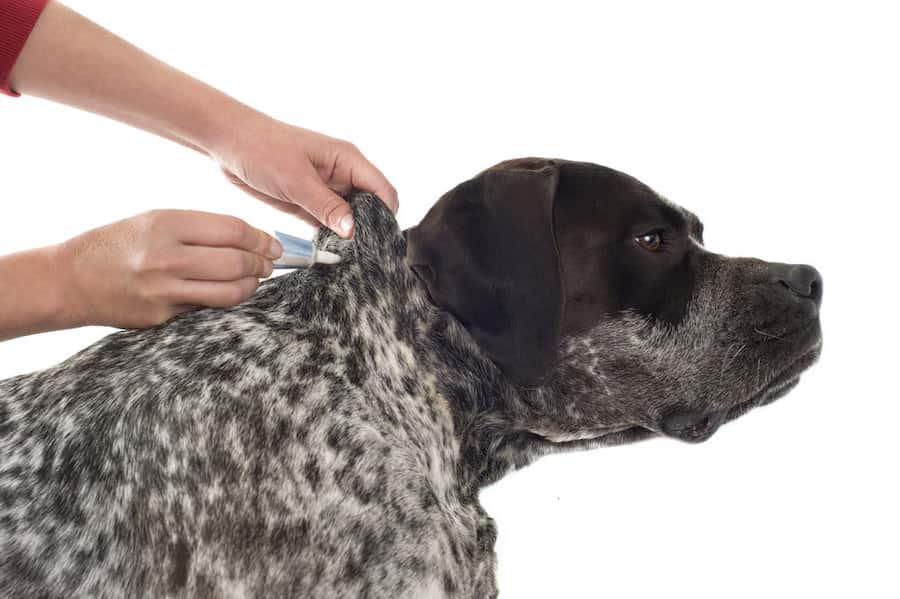
You will also need to wash all of the soft furnishings in your home that your pet may have come into contact with. Finally, you will need to use a flea spray or bomb to eradicate the fleas and their eggs and larvae from all areas of your home.
How to Prevent Flea Dirt
The most straightforward way to prevent flea dirt is to prevent the fleas themselves! Flea infestations are troublesome and time-consuming to deal with, so taking precautions to avoid this issue is well worth your time and effort. Flea dirt will always be present after a flea has fed.
The first and most important thing that you can do is to ensure that your pet is regularly given a high-quality flea prevention treatment, ideally from a veterinarian. This will effectively repel fleas that your pet may come into contact with, preventing them from setting up home in your pet’s fur.
Other treatment methods you can try from home include flea collars for your dogs or cats, flea shampoos (dogs & cats), and various other natural flea remedies.
There are also a number of steps you can take to prevent fleas from entering your home. Many of these methods are natural and inexpensive, yet they can reap you great rewards in avoiding a flea infestation and having to eradicate it.
A wide variety of essential oils, such as lavender and citronella are available on the market and can help to repel fleas. Both of these essential oils are able to deter insects, and as they have healing properties, they are able to soothe irritated, bitten skin.
Plants which help to repel insects like fleas include the herb rosemary, pennyroyal and eucalyptus. When planted around the home they help to keep fleas at bay, and if you pick the foliage from them these leaves can be used as a treatment for existing infestations. Cedar woodchips can also be used throughout your home in areas that may be at risk from fleas, like under furniture, in corners and close to your pet’s bedding or their favorite place to sit.
Another useful substance for deterring fleas is Borax soap which can be scattered in places near where fleas may find their way into your house. You can also make a lemon spray easily from hot water and chunks of fresh lemon; this can be applied to your cat or dog and rubbed into their fur.
Summary
Nobody likes dealing with fleas; they are irritating, difficult and unclean creatures, which leave a delightful trail of flea dirt in your pet’s fur, as well as your home furnishings. Luckily this substance can be an effective way of alerting you to the fact that you may have a flea infestation. Once you are aware of this you can undertake the correct steps to eradicate the problem and hopefully prevent it from returning again in the future.

